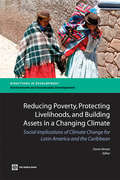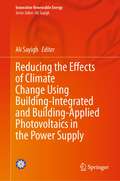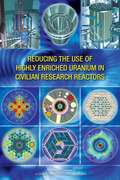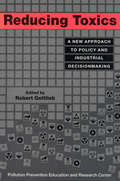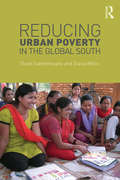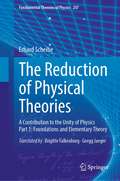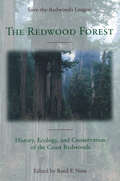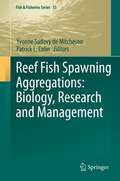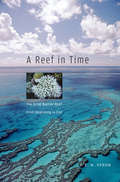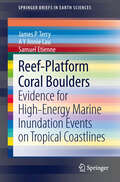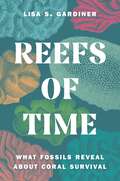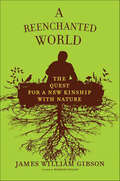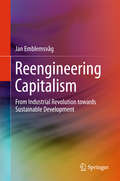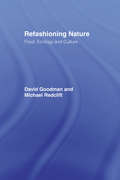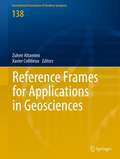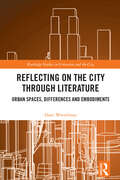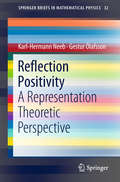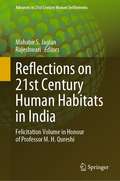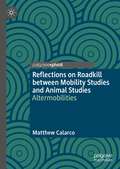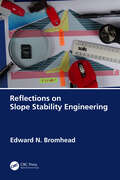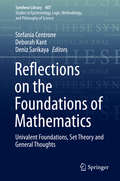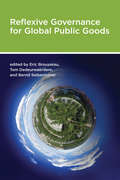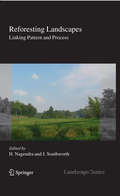- Table View
- List View
Reducing Poverty, Protecting Livelihoods, and Building Assets in a Changing Climate
by Dorte VernerClimate change is the defining development challenge of our time. More than a global environmental issue, climate change and variability threaten to reverse recent progress in poverty reduction and economic growth. Both now and over the long run, climate change and variability threatens human and social development by restricting the fulfillment of human potential and by disempowering people and communities in reducing their livelihoods options. Communities across Latin America and the Caribbean are already experiencing adverse consequences from climate change and variability. Precipitation has increased in the southeastern part of South America, and now often comes in the form of sudden deluges, leading to flooding and soil erosion that endanger people's lives and livelihoods. Southwestern parts of South America and western Central America are seeing a decrease in precipitation and an increase in droughts. Increasing heat and drought in Northeast Brazil threaten the livelihoods of already-marginal smallholders, and may turn parts of the eastern Amazon rainforest into savannah. The Andean inter-tropical glaciers are shrinking and expected to disappear altogether within the next 20-40 years, with significant consequences for water availability. These environmental changes will impact local livelihoods in unprecedented ways. Poverty, inequality, water access, health, and migration are and will be measurably affected by climate change. Using an innovative research methodology, this study finds quantitative evidence of large variations in impacts across regions. Many already poor regions are becoming poorer; traditional livelihoods are being challenged in unprecedented ways; water scarcity is increasing, particularly in poor arid areas; human health is deteriorating; and climate-induced migration is already taking place and may increase. Successfully reducing social vulnerability to climate change and variability requires action and commitment at multiple levels. This volume offers key operational recommendations at the government, community, and household levels with particular emphasis placed on enhancing good governance and technical capacity in the public sector, building social capital in local communities, and protecting the asset base of poor households.
Reducing the Effects of Climate Change Using Building-Integrated and Building-Applied Photovoltaics in the Power Supply (Innovative Renewable Energy)
by Ali SayighThis book looks at the success and continuing potential of photovoltaic (PV) technology in combating climate change by harnessing solar energy through building-integrated (BIPV) and building-applied photovoltaics (BAPV). With PV global capacity soaring from 940 GW in 2021 to 1100 GW in 2022 and projected to reach 1456 GW by the end of 2023, the world is witnessing an unprecedented shift towards renewable energy solutions. Today, no single country exists without some form of PV installation, driven by reduced costs and abundant free sunshine. The book’s chapters delve into the advancements in PV technology, exploring its integration as an essential building material by examining 14 countries and regions – Brazil, The Netherlands, Austria, Poland, Argentina, Iran, Germany, Malaysia, Oman, Bahrain, India, Australia, the United Kingdom, and Egypt – and providing a comprehensive overview of their successful adoption of PV for electricity generation. Whether you’re an architect, builder, engineer, or climate advocate, this vital resource offers insights, international case studies, and a path to a greener future.
Reducing the Use of Highly Enriched Uranium in Civilian Research Reactors
by National Academies of Sciences Engineering MedicineThe continued presence of highly enriched uranium (HEU) in civilian installations such as research reactors poses a threat to national and international security. Minimization, and ultimately elimination, of HEU in civilian research reactors worldwide has been a goal of U.S. policy and programs since 1978. Today, 74 civilian research reactors around the world, including 8 in the United States, use or are planning to use HEU fuel. Since the last National Academies of Sciences, Engineering, and Medicine report on this topic in 2009, 28 reactors have been either shut down or converted from HEU to low enriched uranium fuel. Despite this progress, the large number of remaining HEU-fueled reactors demonstrates that an HEU minimization program continues to be needed on a worldwide scale. Reducing the Use of Highly Enriched Uranium in Civilian Research Reactors assesses the status of and progress toward eliminating the worldwide use of HEU fuel in civilian research and test reactors.
Reducing Toxics: A New Approach To Policy And Industrial Decisionmaking
by Robert GottliebIn Reducing Toxics, leading experts address industry, technology, health, and policy issues and explore the potential for pollution prevention at the industry and facility levels. They consider both the regulatory and institutional settings of toxics reduction initiatives, prescribe strategies for developing a prevention framework, and apply these principles in analyzing industry case studies. Among the topics considered are: the evolution of, and limits to, current environmental policy incorporating prevention into production planning and decisionmaking do voluntary programs lead to industry greening or greenwashing? case studies of the chemical, aerosols, radiator repair and electric vehicle industries opportunities for and barriers to pollution prevention Reducing Toxics offers an analytic framework for defining and understanding different approaches in the toxics area and describes the basis for a new policy and industrial decisionmaking construct.
Reducing Urban Poverty in the Global South
by David Satterthwaite Diana MitlinUrban areas in the Global South now house most of the world’s urban population and are projected to house almost all its increase between now and 2030. There is a growing recognition that the scale of urban poverty has been overlooked – and that it is increasing both in numbers and in the proportion of the world’s poor population that live and work in urban areas. This is the first book to review the effectiveness of different approaches to reducing urban poverty in the Global South. It describes and discusses the different ways in which national and local governments, international agencies and civil society organizations are seeking to reduce urban poverty. Different approaches are explored, for instance; market approaches, welfare, rights-based approaches and technical/professional support. The book also considers the roles of clientelism and of social movements. Case studies illustrate different approaches and explore their effectiveness. Reducing Urban Poverty in the Global South also analyses the poverty reduction strategies developed by organized low-income groups especially those living in informal settlements. It explains how they and the federations or networks they have formed have demonstrated new approaches that have challenged adverse political relations and negotiated more effective support. Local and national governments and international agencies can become far more effective at addressing urban poverty at scale by, as is proposed in this book, working with and supporting the urban poor and their organizations. This book will be an invaluable resource for researchers and postgraduate students in urban development, poverty reduction, urban geography, and for practitioners and organisations working in urban development programmes in the Global South.
The Reduction of Physical Theories: A Contribution to the Unity of Physics Part 1: Foundations and Elementary Theory (Fundamental Theories of Physics #207)
by Erhard ScheibeUsing simple physical examples, this work by Erhard Scheibe presents an important and powerful approach to the reduction of physical theories. Novel to the approach is that it is not based, as usual, on a single reduction concept that is fixed once and for all, but on a series of recursively constructed reductions, with which all reductions appear as combinations of very specific elementary reductions. This leaves the general notion of theory reduction initially open and is beneficial for the treatment of the difficult cases of reduction from the fields of special and general relativity, thermodynamics, statistical mechanics,and quantum mechanics, which are treated in the second volume. The book is systematically organized and intended for readers interested in philosophy of science as well as physicists without deep philosophical knowledge.
The Redwood Forest: History, Ecology, and Conservation of the Coast Redwoods
by Reed F. Noss Save-the-Redwoods LeagueEvidence is mounting that redwood forests, like many other ecosystems, cannot survive as small, isolated fragments in human-altered landscapes. Such fragments lose their diversity over time and, in the case of redwoods, may even lose the ability to grow new, giant trees.The Redwood Forest, written in support of Save-the-Redwood League's master plan, provides scientific guidance for saving the redwood forest by bringing together in a single volume the latest insights from conservation biology along with new information from data-gathering techniques such as GIS and remote sensing. It presents the most current findings on the geologic and cultural history, natural history, ecology, management, and conservation of the flora and fauna of the redwood ecosystem. Leading experts offer a comprehensive account of the redwoods ecosystem, with specific chapters examining the history of the redwood lineage; terrestrial flora and fauna, communities, and ecosystems; aquatic ecosystems; landscape-scale conservation planning; and management alternatives relating to forestry, restoration, and recreation; among other topics.The Redwood Forest offers a case study for ecosystem-level conservation and gives conservation organizations the information, technical tools, and broad perspective they need to evaluate redwood sites and landscapes for conservation. It contains the latest information from groundbreaking research on such topics as redwood canopy communities, the role of fog in sustaining redwood forests, and the function of redwood burls. It also presents sobering lessons from current research on the effects of forestry activities on the sensitive faunas of redwood forests and streams. The key to perpetuating the redwood forest is understanding how it functions; this book represents an important step in establishing such an understanding.
Reef Fish Spawning Aggregations: Biology, Research and Management
by Patrick L. Colin Yvonne Sadovy de MitchesonReef fish spawning aggregations, ranging from small groups to many tens of thousands of individuals, are spectacular but poorly known natural phenomena whereby fish assemble at specific times and locations to spawn. For some species these large groups may be the only form of reproduction, the high fish numbers briefly giving a false impression of stability and abundance--an 'illusion of plenty'. They are often a focus for intensive seasonal fishing because of their predictability and because many important commercial fishes form them. Highly vulnerable to overexploitation, many aggregations and their associated fisheries, have disappeared or are in decline. Few are effectively managed or incorporated into protected areas. Aggregations are not well understood by fishery scientists, managers and conservationists and their significance little appreciated by fishers or the wider public. To ensure their persistence to replenish important fisheries in coral ecosystems, maintain their ecosystem function and continue to delight divers, a significant change in perspective is needed to foster protection and management. This book provides comprehensive and practical coverage of the biology, study and management of reef fish aggregations, exploring their how, when, where, and why. It explores ways to better protect, study, manage and conserve them, while identifying key data gaps and questions. The text is extensively illustrated with many unique, never before published, photographs and graphics. Case studies on over 20 interesting and important fishes are included, outlining their biology and fisheries and highlighting major concerns and challenges.
A Reef in Time: The Great Barrier Reef from Beginning to End
by J.E.N. VeronLike many coral specialists fifteen years ago, J.E.N. Veron thought Australia’s Great Barrier Reef was impervious to climate change. “Owned by a prosperous country and accorded the protection it deserves, it would surely not go the way of the Amazon rain forest or the parklands of Africa, but would endure forever. That is what I thought once, but I think it no longer.” This book is Veron’s Silent Spring for the world’s coral reefs. Veron presents the geological history of the reef, the biology of coral reef ecosystems, and a primer on what we know about climate change. He concludes that the Great Barrier Reef and, indeed, most coral reefs will be dead from mass bleaching and irreversible acidification within the coming century unless greenhouse gas emissions are curbed. If we don’t have the political will to confront the plight of the world’s reefs, he argues, current processes already in motion will become unstoppable, bringing on a mass extinction the world has not seen for 65 million years. Our species has cracked its own genetic code and sent representatives of its kind to the moon—we can certainly save the world’s reefs if we want to. But to achieve this goal, we must devote scientific expertise and political muscle to the development of green technologies that will dramatically reduce greenhouse emissions and reverse acidification of the oceans.
Reef-Platform Coral Boulders
by James P Terry Samuel Etienne A Y LauThe primary goal here is to present a treatise on the significance and value of coarse clastic carbonate sediments (i.e. large coral boulders) on tropical coastlines for understanding both modern and pre-historical (Holocene) high-magnitude marine inundation events. There has been a rapid groundswell of interest in large carbonate blocks on tropical coasts over the last decade, yet it is not widely appreciated that such features were observed and recorded back in the early explorations of Matthew Flinders on the Great Barrier Reef in the 1800s. This book will illuminate how various characteristics of datable carbonate blocks torn up from coral reefs and deposited on reef platforms yield importance evidence about the storms and tsunamis that emplaced them over decadal and centennial timescales. No comprehensive review has so far been published. A need now exists for a 'definitive reference' on coral boulder research, which details the earliest observations, changing terminology, sedimentology, and relevance for coastal hazard research in the tropics. A wide range of examples will be incorporated from across Asia, Australia, the Pacific and the Americas, as well as a full up-to-date review of the existing literature.
Reefs of Time: What Fossils Reveal about Coral Survival
by Lisa S. GardinerHow fossilized reefs hold clues to the survival of corals in the AnthropoceneWith rising global temperatures, pollution, overfishing, ocean acidification, and other problems caused by humans, there&’s no question that today&’s coral reefs are in trouble. As predictions about the future of these ecosystems grow increasingly dire, scientists are looking in an unlikely place for new ways to save corals: the past. The reefs of yesteryear faced challenges too, from changing sea level to temperature shifts, and understanding how they survived and when they faltered can help guide our efforts to help ensure a future for reefs.Lisa Gardiner weaves together the latest cutting-edge science with stories of her expeditions to tropical locales to show how fossils and other reef remains offer tantalizing glimpses of how corals persisted through time, and how this knowledge can guide our efforts to ensure a future for these remarkable organisms. Gardiner takes readers on an excursion into &“the shallow end of deep time&”—when marine life was much like today&’s yet unaffected by human influence—to explore the cities of fossilized limestone left behind by corals and other reef life millennia ago. The changes in reefs today are unlike anything ever seen before, but the fossil record offers hope that the coral reefs of tomorrow can weather the environmental challenges that lie ahead.A breathtaking journey of scientific discovery, Reefs of Time reveals how lessons from the past can help us to chart a path forward for coral reefs struggling for survival in an age of climate crisis and mass extinction.
A Reenchanted World: The Quest for a New Kinship with Nature
by James William GibsonA surprising and enlightening investigation of how modern society is making nature sacred once againFor more than two centuries, Western cultures, as they became ever more industrialized, increasingly regarded the natural world as little more than a collection of useful raw resources. The folklore of powerful forest spirits and mountain demons was displaced by the practicalities of logging and strip-mining; the traditional rituals of hunting ceremonies gave way to the indiscriminate butchering of animals for meat markets. In the famous lament of Max Weber, our surroundings became "disenchanted," with nature's magic swept away by secularization and rationalization.But now, as acclaimed sociologist James William Gibson reveals in this insightful study, the culture of enchantment is making an astonishing comeback. From Greenpeace eco-warriors to evangelical Christians preaching "creation care" and geneticists who speak of human-animal kinship, Gibson finds a remarkably broad yearning for a spiritual reconnection to nature. As we grapple with increasingly dire environmental disasters, he points to this cultural shift as the last utopian dream—the final hope for protecting the world that all of us must live in.
Reengineering Capitalism
by Jan EmblemsvågThis book provides an innovative approach to sustainable development, one based on insights gleaned from the Industrial Revolution to the present, and which highlights the importance of aligning economic interests with sustainable development considerations. It investigates how a broad-based systematic approach can be used to develop societies sustainably by integrating environmental issues into the capitalist system without value-laden approaches, which produce little more than politics and inaction as we are witnessing today. The proposed approach focuses on realigning the financial markets to providing capital at reasonable cost to fuel innovation towards sustainable development across the entire economy. This requires government policies that level the playing field and also intervene strategically in cases where the playing field is weak or missing . Intended for researchers, policy-makers and graduate students, the book will also benefit non-governmental organizations, economists and the general public.
Refag 2014
by Tonie Van DamThis book series is composed of peer-reviewed proceedings of selected symposia organized by the International Association of Geodesy. It deals primarily with topics related to Geodesy as applied to the Earth Sciences : terrestrial reference frame, Earth gravity field, Geodynamics and Earth rotation, Positioning and engineering applications.
Refashioning Nature: Food, Ecology and Culture
by David Goodman Michael RedcliftWe live in a society as dominated by food preference as by sexual preference, as obsessed with eating too much as with eating too little. In this accessible, cross-disciplinary text, David Goodman and Michael Redclift look at the development of the modern food system, integrating different bodies of knowledge and debate concerning food, agriculture, the environment and the household. They link changes in our diet and concern with the environment to many of the problems afflicting developing countries: food shortages, poor nutrition and wholesale environmental destruction.
Reference Frames for Applications in Geosciences
by Xavier Collilieux Zuheir AltamimiReference systems and frames are of primary importance for many Earth science applications, satellite navigation as well as for practical applications in geo-information. A precisely defined reference frame is needed for the quantification of, e.g. Earth rotation and its gravity field, global and regional sea level variation, tectonic motion and deformation, post-glacial rebound, geocenter motion, large scale deformation due to Earthquakes, local subsidence and other ruptures and crustal dislocations. All of these important scientific applications fundamentally depend on a truly global reference system that only space geodesy can realize. This volume details the proceedigns of the IAG Symposium REFAG2010 (Marne la Vallée, France, October 4-8, 2010) The primary scope of REFAG2010 was to address today's achievements on theoretical concepts of reference systems and their practical implementations by individual space geodetic techniques and their combinations, underlying limiting factors, systematic errors and novel approaches for future improvements.
Reflecting on the City Through Literature: Urban Spaces, Differences and Embodiments (Routledge Studies in Urbanism and the City)
by Daan WesselmanThis book develops and demonstrates an interdisciplinary method that reads literary works as a way of thinking about the city. Literary works do not only provide reflections of the city – depictions of the city as an aesthetically compelling setting – but the literary reflection of the city also offers a critical reflection on the city. How can spatial difference be conceived in cities that are changing beyond the form of the classical modern metropolis of the early 20th century? How can one think of the relation between individual urban subjects and their urban environment, when neither spaces nor discourses of the city provide them with an answer to the question where they might "belong"? How does the human body interact with its urban surroundings, and how should technological mediations be thought of? This book approaches these questions through analysing literary texts, focusing on concepts like heterotopia, non-place and the posthuman. This book will be of interest to interdisciplinary scholars and students of the city, particularly in the fields of Urban Studies, Literary Studies, Geography, and Architecture.
Reflection Positivity: A Representation Theoretic Perspective (SpringerBriefs in Mathematical Physics #32)
by Karl-Hermann Neeb Gestur ÓlafssonRefection Positivity is a central theme at the crossroads of Lie group representations, euclidean and abstract harmonic analysis, constructive quantum field theory, and stochastic processes.This book provides the first presentation of the representation theoretic aspects of Refection Positivity and discusses its connections to those different fields on a level suitable for doctoral students and researchers in related fields.It starts with a general introduction to the ideas and methods involving refection positive Hilbert spaces and the Osterwalder--Schrader transform. It then turns to Reflection Positivity in Lie group representations. Already the case of one-dimensional groups is extremely rich.For the real line it connects naturally with Lax--Phillips scattering theory and for the circle group it provides a new perspective on the Kubo--Martin--Schwinger (KMS) condition for states of operator algebras. For Lie groups Reflection Positivity connects unitary representations of a symmetric Lie group with unitary representations of its Cartan dual Lie group.A typical example is the duality between the Euclidean group E(n) and the Poincare group P(n) of special relativity. It discusses in particular the curved context of the duality between spheres and hyperbolic spaces. Further it presents some new integration techniques for representations of Lie algebras by unbounded operators which are needed for the passage to the dual group. Positive definite functions, kernels and distributions and used throughout as a central tool.
Reflections on 21st Century Human Habitats in India: Felicitation Volume in Honour of Professor M. H. Qureshi (Advances in 21st Century Human Settlements)
by Mahabir S. Jaglan RajeshwariThis book highlights various dimensions of human habitats in 21st Century India. The human habitats in the country are marked by perceptible inequality in social and economic spheres. This is occurring in tandem with rapid socio-economic transformation across both rural and urban landscapes. There is a plurality of transformative characteristics in terms of social and economic classes, gender and space. Inequality in access to natural resources such as land and water is still a big factor in socio-economic differentiation in rural habitats. This constructs a pedestal of unequal opportunities and access to basic human necessities such as healthcare, education, potable water and sanitation. Human habitats experiencing socio-spatial segregation and exclusion based on caste, community and gender are detrimental in formation of a civil society and its sustainability in long terms. The ideal situation for this would be formation of an inclusive society that celebrates age old socio-cultural diversities, reduces inequalities and reveres composite culture.
Reflections on Roadkill between Mobility Studies and Animal Studies: Altermobilities
by Matthew CalarcoRoadkill is a recurrent but often unthought feature of modern life. Yet, consideration of the broader significance of the myriad social, ethical, and political issues related to roadkill has largely gone missing from mainstream scholarship and activism. This neglect persists even in fields such as mobility studies and animal studies that would otherwise seem to have a vested interest in the topic. This book aims to bring roadkill to the foreground of current discussions among scholars and activists in these fields in order to demonstrate that roadkill is a uniquely important site from which to understand and contest the machinations of the dominant social order. It argues that a careful examination of roadkill can help both to uncover the hidden violence of contemporary human-centered systems of mobility and to develop alternative modes of mobility for a renewed social life in common with our more-than-human kin.
Reflections on Slope Stability Engineering
by Edward N. BromheadSlope stability engineering is both an art and a science practised by many civil and geotechnical engineers involved in work on landslides, earth dams, breakwaters, coastal defence, earthworks slopes for roads, canals, railways, pipelines, housing developments, and other related developments. This book contains the detailed reflections of its author, who has practised and researched in the field for over a half-century. It is written in an informal style that makes it an interesting and thought-provoking practitioner guide to landslides and slope problems and their investigation, analysis, and remediation, considering both natural and man-made slopes and earthworks, and without the need for the usual equations and illustrations. Reflections on Slope Stability Engineering is targeted primarily at practitioners working in the investigations of slope instability and the design and construction of treatments of the problem, especially those early in their careers, but the accessible style also suits students who are developing an interest in the subject and even those engineers with only a casual interest in this branch of geotechnics.
Reflections on the Foundations of Mathematics: Univalent Foundations, Set Theory and General Thoughts (Synthese Library #407)
by Stefania Centrone Deborah Kant Deniz SarikayaThis edited work presents contemporary mathematical practice in the foundational mathematical theories, in particular set theory and the univalent foundations. It shares the work of significant scholars across the disciplines of mathematics, philosophy and computer science. Readers will discover systematic thought on criteria for a suitable foundation in mathematics and philosophical reflections around the mathematical perspectives.The volume is divided into three sections, the first two of which focus on the two most prominent candidate theories for a foundation of mathematics. Readers may trace current research in set theory, which has widely been assumed to serve as a framework for foundational issues, as well as new material elaborating on the univalent foundations, considering an approach based on homotopy type theory (HoTT). The third section then builds on this and is centred on philosophical questions connected to the foundations of mathematics. Here, the authors contribute to discussions on foundational criteria with more general thoughts on the foundations of mathematics which are not connected to particular theories.This book shares the work of some of the most important scholars in the fields of set theory (S. Friedman), non-classical logic (G. Priest) and the philosophy of mathematics (P. Maddy). The reader will become aware of the advantages of each theory and objections to it as a foundation, following the latest and best work across the disciplines and it is therefore a valuable read for anyone working on the foundations of mathematics or in the philosophy of mathematics.
Reflexive Governance for Global Public Goods (Politics, Science, and the Environment)
by Eric Brousseau Tom Dedeurwaerdere Bernd SiebenhünerGovernance challenges and solutions for the provision of global public goods in such areas as the environment, food security, and development.Global public goods (GPGs)—the economic term for a broad range of goods and services that benefit everyone, including stable climate, public health, and economic security—pose notable governance challenges. At the national level, public goods are often provided by government, but at the global level there is no established state-like entity to take charge of their provision. The complex nature of many GPGs poses additional problems of coordination, knowledge generation and the formation of citizen preferences. This book considers traditional public economy theory of public goods provision as oversimplified, because it is state centered and fiscally focused. It develops a multidisciplinary look at the challenges of understanding and designing appropriate governance regimes for different types of goods in such areas as the environment, food security, and development assistance.The chapter authors, all leading scholars in the field, explore the misalignment between existing GPG policies and actors' incentives and understandings. They analyze the complex impact of incentives, the involvement of stakeholders in collective decision making, and the specific coordination needed for the generation of knowledge. The book shows that governance of GPGs must be democratic, reflexive—emphasizing collective learning processes—and knowledge based in order to be effective.
Reflexive Governance for Global Public Goods
by Eric Brousseau Tom Dedeurwaerdere Bernd SiebenhünerGlobal public goods (GPGs)--the economic term for a broad range of goods and services that benefit everyone, including stable climate, public health, and economic security--pose notable governance challenges. At the national level, public goods are often provided by government, but at the global level there is no established state-like entity to take charge of their provision. The complex nature of many GPGs poses additional problems of coordination, knowledge generation and the formation of citizen preferences. This book considers traditional public economy theory of public goods provision as oversimplified, because it is state centered and fiscally focused. It develops a multidisciplinary look at the challenges of understanding and designing appropriate governance regimes for different types of goods in such areas as the environment, food security, and development assistance. The chapter authors, all leading scholars in the field, explore the misalignment between existing GPG policies and actors' incentives and understandings. They analyze the complex impact of incentives, the involvement of stakeholders in collective decision making, and the specific coordination needed for the generation of knowledge. The book shows that governance of GPGs must be democratic, reflexive--emphasizing collective learning processes--and knowledge based in order to be effective.
Reforesting Landscapes
by Jane Southworth Harini NagendraThe 21st century has seen the beginnings of a great restoration effort towards the world's forests, accompanied by the emergence of an increasing literature on reforestation, regeneration and regrowth of forest cover. Yet to date, there is no volume which synthesises current knowledge on the extent, trends, patterns and drivers of reforestation. This edited volume draws together research from leading researchers to explore reforestation and forest regrowth across the world, from multiple dimensions - including ecosystem services, protected areas, social institutions, economic transitions, remediation of environmental problems, conservation and land abandonment - and at different scales. Detailing the methods and analyses used from across a wide range of disciplines, and incorporating research from North, South and Central America, Africa, Asia and Europe, this groundbreaking book provides a global overview of current trends, explores their underlying causes and proposes future forest trajectories. The first of its kind, the book will provide an invaluable reference for researchers and students involved in interdisciplinary research and working on issues relevant to the biophysical, geographic, socioeconomic and institutional processes associated with reforestation.
